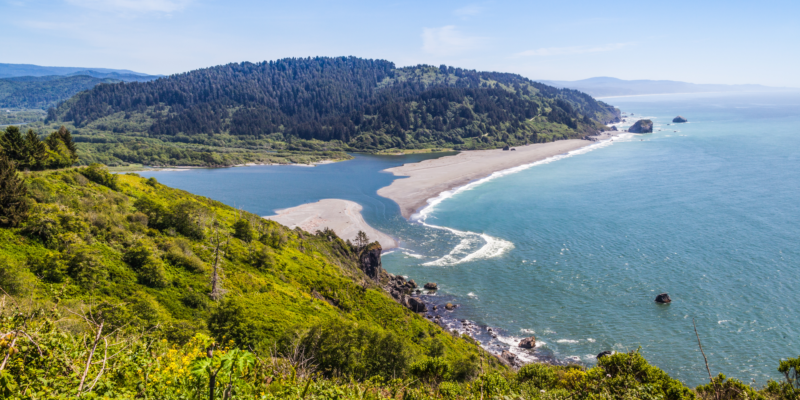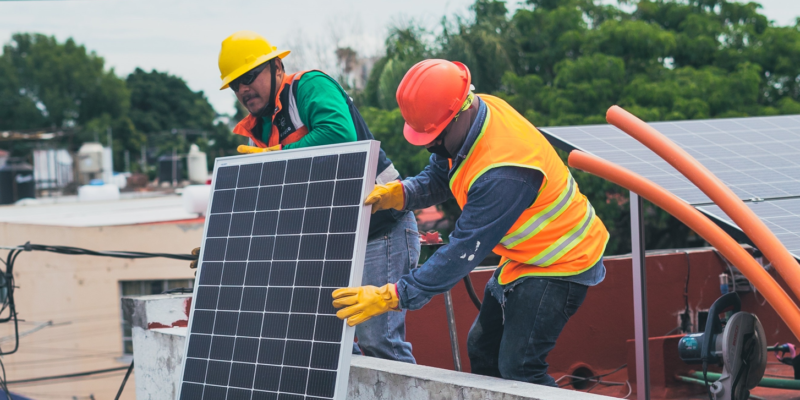If you’re a fan of this blog, you know we love sustainable construction, but this is our first post about sustainable de-construction!
In March 2023, work began on the biggest dam removal project in United States history: four hydroelectric dams in the Klamath River, which runs through Oregon and California. These dams are being removed to improve river health and allow for native fish migration.* The project is expected to cost around $450 million and will be completed in 2024.
A Legacy of Damming
For over a century, dams have harnessed the power of the Klamath River to generate electricity for surrounding Oregonians. However, these dams have also sparked controversy by disrupting the river’s ecosystems, obstructing fish migration routes, and causing harmful algal blooms.
The Klamath River Dam Removal Project aims to reverse the detrimental effects of the dams and restore the river to its original pristine state. The project is a result of a collaborative effort between the Yurok, Karuk, and Klamath tribes; government agencies; environmental organizations; and stakeholders, who have joined forces to address the environmental concerns and ensure the success of the project.
Restoring the Ecosystem
Prior to the creation of the dams, the Klamath River had the largest amount of salmon of any river on the West Coast. The removal will reopen crucial habitat for Chinook salmon and other migrating fish, allowing them to reach their spawning grounds upstream. This restoration will have cascading effects on the entire food chain, revitalizing bird, mammal, and other aquatic species that depend on healthy fish populations. It will also return the river’s natural flow patterns, which will reduce toxic algae blooms and improve water quality.
Preparing for Dam Removal
The dam removal process involves a lot more than knocking down the dam walls. Over the years, sediment has accumulated behind the dams, so careful assessment of the sediment must be conducted to determine its composition and any potential contaminants. Once the sediment is determined to be safe, it will then be transported downstream to prevent adverse impacts on the river and its ecosystems.
One of the primary objectives of dam removal is to restore fish migration routes, so before the dams are removed, any native fish that could be stranded or impacted by the removal process are captured and relocated to suitable habitats upstream or downstream of the dams.
Then, portions of the dams, like spillways and powerhouses, will be demolished to allow water to flow around the dams without excessive sediment release. Once the dams are removed, the restoration process begins. This will include reshaping the river channel, reestablishing natural flow patterns, and reintroducing native vegetation. For the Klamath River Project, Resource Environmental Solutions, a restoration contractor, and local tribes will work together to plant over 19 billion seeds to reestablish native plant species.
Restoring Communities
As the largest dam removal project in US history, the Klamath River Project represents a landmark initiative in environmental conservation and restoration.
The collaboration between tribes, government agencies, and environmental organizations demonstrates a collective commitment to safeguarding our natural resources while creating opportunities in the construction industry. As the dams come down, the Klamath River will once again flow freely, carrying with it renewed hope for a healthier, more vibrant ecosystem and a brighter future for all who depend on its life-giving waters.
*We know some of you might be rolling your eyes or cringing at the word “environmentalist,” but think of it this way: there are many political, social, or economic reasons for the jobs we work on and we don’t always know the full background. These projects – even deconstruction jobs based on environmentalism – are still construction projects, creating opportunities and jobs in our industry. Steadfast isn’t going to be mad at that!



